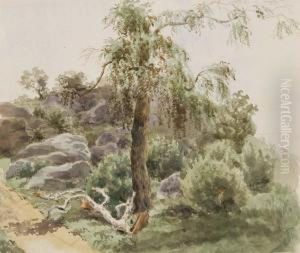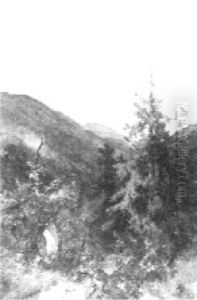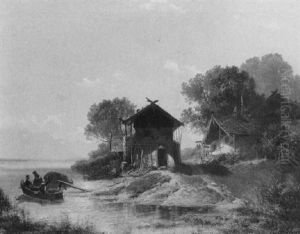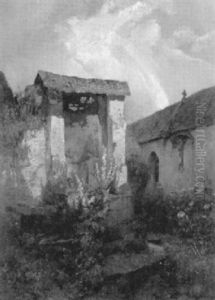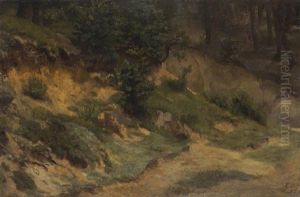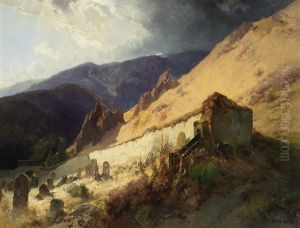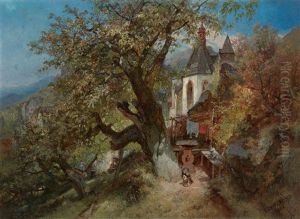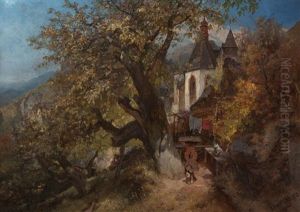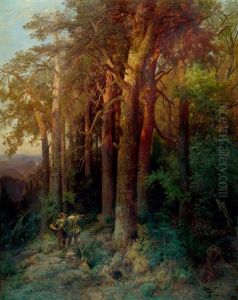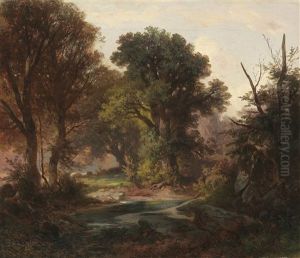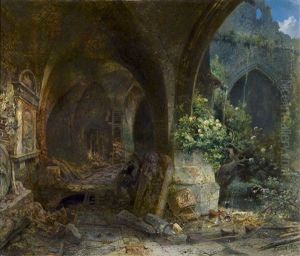Ernst Erwin Oehme Paintings
Ernst Erwin Oehme was a German painter associated with the Nazarene movement, which sought to revive honesty and spirituality in Christian art. Born in Dresden on April 23, 1831, Oehme was influenced by the works of Caspar David Friedrich, a key figure in German Romanticism known for his allegorical landscapes. Oehme's own style often featured similar themes of nature and mysticism, with an emphasis on evocative lighting and a meticulous rendering of detail.
During his career, Oehme primarily focused on landscape painting, though he also produced a number of religious works. His landscapes often carried a sense of the sublime, a characteristic trait of the Romantic movement, which aimed to capture the awe-inspiring power and grandeur of nature. Oehme's paintings typically exhibit a serene and contemplative mood, inviting the viewer to reflect on the natural world and its spiritual dimensions.
Oehme's dedication to the Nazarene movement and its ideals meant that his work was somewhat at odds with the prevailing trends of his time, such as Impressionism, which began to gain prominence later in his life. Nevertheless, he maintained a commitment to his artistic vision, which was rooted in a blend of Romanticism and a pious regard for nature and the divine.
Ernst Erwin Oehme passed away on May 9, 1907, in Bannewitz, near Dresden. Today, his works are held in various collections and continue to be appreciated for their quiet beauty and meditative qualities. His contribution to German art, particularly within the context of the Nazarene movement, remains a testament to the enduring appeal of Romantic landscapes and the quest for spiritual depth in visual art.




